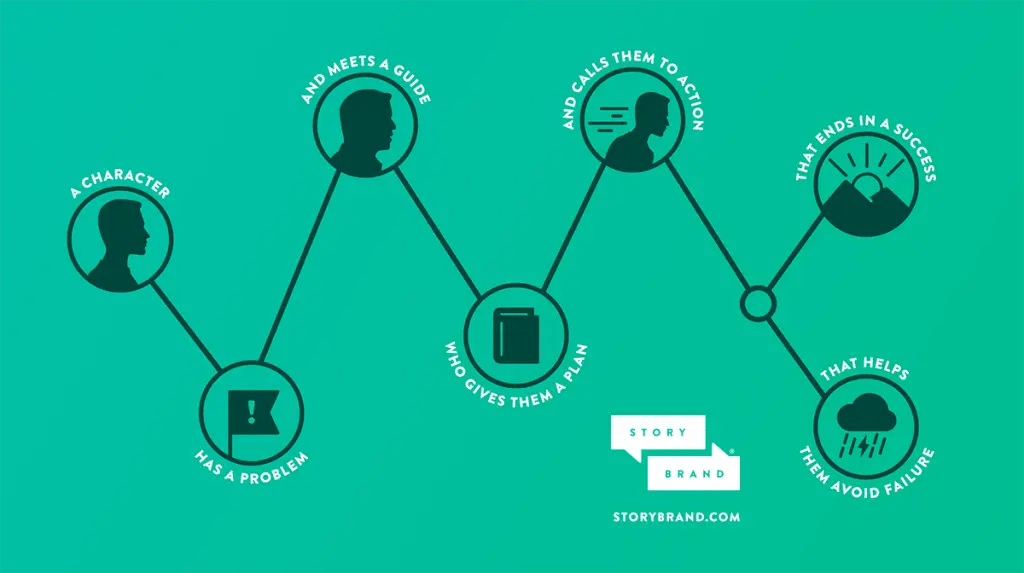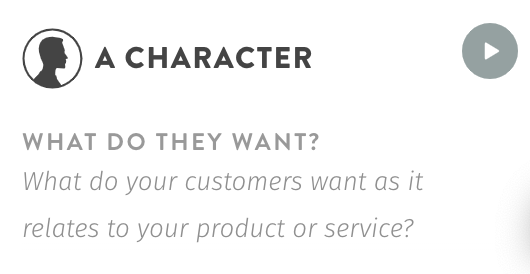The 9 Most Common BrandScript Mistakes (And How to Fix Them)
Published: Apr 19, 2024
If you’ve read Building a StoryBrand, then you’re familiar with the BrandScript, a powerful tool to help you craft your marketing message using the 7-part StoryBrand Framework.
A BrandScript helps you create a story where the customer is the hero and you (or your brand) are the guide who helps them win by solving their biggest problem.

As the guide in the story, your brand needs to demonstrate both empathy and authority by conveying to your customers, “We understand what you’re struggling with and we’ve got the perfect solution for you.”
To do that, you must truly know what your customer wants and the challenges they face. These challenges are of three types: practical problems (external), how these problems make them feel (internal), and why it's unfair for them to deal with these issues (philosophical).
When you can deeply understand and articulate your customer’s problem, you can then give them a simple plan that shows them how your product or services will help them win. It’s important to sketch out the blissful highs of success with your product and the dismal lows without it, making the choice clear. This narrative process transforms how customers see themselves—for the better, thanks to your brand.
But here's where things get tricky…
Brands make a few common mistakes when trying to fill out their Brandscript. Let's dive into these mistakes and how to fix them, making sure your brand's story hits the mark every time.
Mistake #1:
Not clearly defining the character's want.
Repeating the language from the “character want” section in the “external problems” section.
In every good story, the hero wants something. Harry Potter wants to defeat Voldemort. Frodo Baggins wants to destroy the ring. The first thing you'll define in your BrandScript is what your customer (the hero of the story) wants.
Make sure the character's want is specific and relevant to your product or service. It should feel important to your audience—so much so that they'd be willing to pay to get it fixed.
Original Mistake: A mattress company described the character's want as “wanting a better bedroom,” which is too broad and not connected to the mattress itself.
Correction: To make your BrandScript hit home, you've got to zero in on what the customer really wants that you can provide. For example, "They’re not just after any mattress. They’re looking for a mattress that gives them the kind of sleep that makes them feel like they’re on vacation every night.”
Mistake #2:
Repeating the language from the “character want” section in the “external problems” section.
But too many brands carry over the customer want that they've just defined into the external problem section of their BrandScript.
Instead, use different language to describe the external problem that the product or service solves. Reframe the external problem in a way that deepens the audience's understanding of the situation and sets the stage for your solution.
Original Mistake: The character wants a good night's sleep. The external problem is stated as, "The problem is, they're not sleeping."
Correction: Use a more insightful approach to describe the external problem in terms of its impact or the specific obstacles that prevent the character from achieving their want. For example, "Despite their best efforts, the character is kept awake by tossing and turning on uncomfortable old mattress, leaving them tired and frustrated every morning."
Mistake #3:
Overlooking the character’s internal struggle.
The internal problem should be a feeling that the character is experiencing that is preventing them from achieving their want.
Original Mistake: The feelings that the character is experiencing because of the problem are not mentioned in the BrandScript.
Correction: To connect with your audience on a deeper level, highlight the character’s feelings as the internal problem. For example, if the product is a mattress, the internal problem might be, “They're battling anxiety and stress that keeps them up all night.”
Mistake #4:
Not connecting empathy and authority to customer problems.
Make sure your BrandScript reflects the customer's problems and includes testimonials from satisfied customers. This will help the reader connect with the character and understand why they need the product or service. Empathy is about understanding the customer's problem and how it affects them. Authority is about showing that you have the knowledge and experience to solve the customer's problem.
Original Mistake: The customer's problem is described in a way that's too general and doesn't show that the brand really gets it or has the answers.
Correction: Your story needs to make it clear you understand what's bothering your customers and prove you're the right one to help. For example, if you own a pet grooming business, you might say, "We know how frustrating it can be to search for a reliable pet grooming service that truly cares for your pet's well-being and comfort. With over 10 years of making pets and owners happy, we ensure your furry friend is in expert hands, making their grooming experience stress-free and enjoyable."
Mistake #5
Not creating a clear and concise plan.
The plan should be easy for customers to follow and should clearly outline the steps they need to take to achieve their goals.
Original Mistake: A brand claims its product will solve a problem, but they don’t give any specific steps on how to get there. Or they give too many steps and confuse their audience.
Correction: Make sure your plan is simple, clear, and concise. For example, if the product is a mattress, the plan might be “Choose the right mattress with our sleep quiz, follow our easy setup guide, and establish a regular sleep schedule.” This breaks down the process into actionable steps, making it clear how to proceed.
Mistake #6
Not making the transitional call to action valuable enough.
The transitional call to action should offer something of value to customers in exchange for their email address. If the free offer isn’t relevant and valuable, the customers won’t share their contact information and you’ll lose out on sales.
Original Mistake: The transitional call to action is just a generic sign-up for updates, without any enticing offer. Customers have no compelling reason to give out their email addresses.
Correction: Your transitional call to action needs to be compelling and solve an immediate problem. For example, if the product is a mattress, you might say, “Unlock the secret to the perfect night's sleep! Download our exclusive mattress selection guide for free.” This provides immediate value and establishes a reason for customers to engage further with your brand.
Mistake #7
Not focusing on the customer in the success and failure sections.
The success and failure sections should show how the product or service can help customers achieve their goals and avoid negative consequences.
Original Mistake: The success and failure sections are too focused on the product features rather than the customer's daily life and well-being.
Correction: Revamp these sections to center on the customer's journey. For example, if the product is a mattress, the success section might show how the mattress helped customers get a good night's sleep and improve their overall health. The failure section might show how customers who didn't purchase the mattress continued to experience sleep problems and other negative consequences.
Mistake #8
Not using clear and concise language.
The BrandScript should be easy to read and understand. Avoid using jargon or technical terms that customers may not be familiar with.
Original Mistake: Descriptions are packed with technical terms and industry jargon, like "The mattress is made with a patented viscoelastic foam.”
Correction: Simplify your language to make it accessible. A better way to say it could be, "The mattress is made with a special foam that conforms to your body and provides support." This is clearer and more concise language that customers can easily understand.
Mistake #9
Not connecting the brandscript to the website.
The BrandScript should be reflected in the website's design, content, and call to action. Neglecting to align the BrandScript with the website means you'll continue confusing customers and missing out on more leads and sales.
Original Mistake: The website lacks the spirit and message of the BrandScript. It just lists products without engaging content or helpful resources.
Correction: Make sure your website embodies your BrandScript. For example, if the BrandScript emphasizes the importance of getting a good night's sleep, the website should include information on the benefits of sleep and how to improve sleep habits. The call to action should also be aligned with the BrandScript, like offering a free guide on how to choose the right mattress.
Get your brand message right
Avoiding these common BrandScript mistakes can dramatically shift how your brand connects with your potential customers. A great marketing message is all about understanding what your customers need and showing them how you can help.
Once you've fixed your BrandScript, it's time to start implementing it into your marketing.
I'll teach you exactly how to do that in The 5 Parts of an Effective Sales Funnel.

